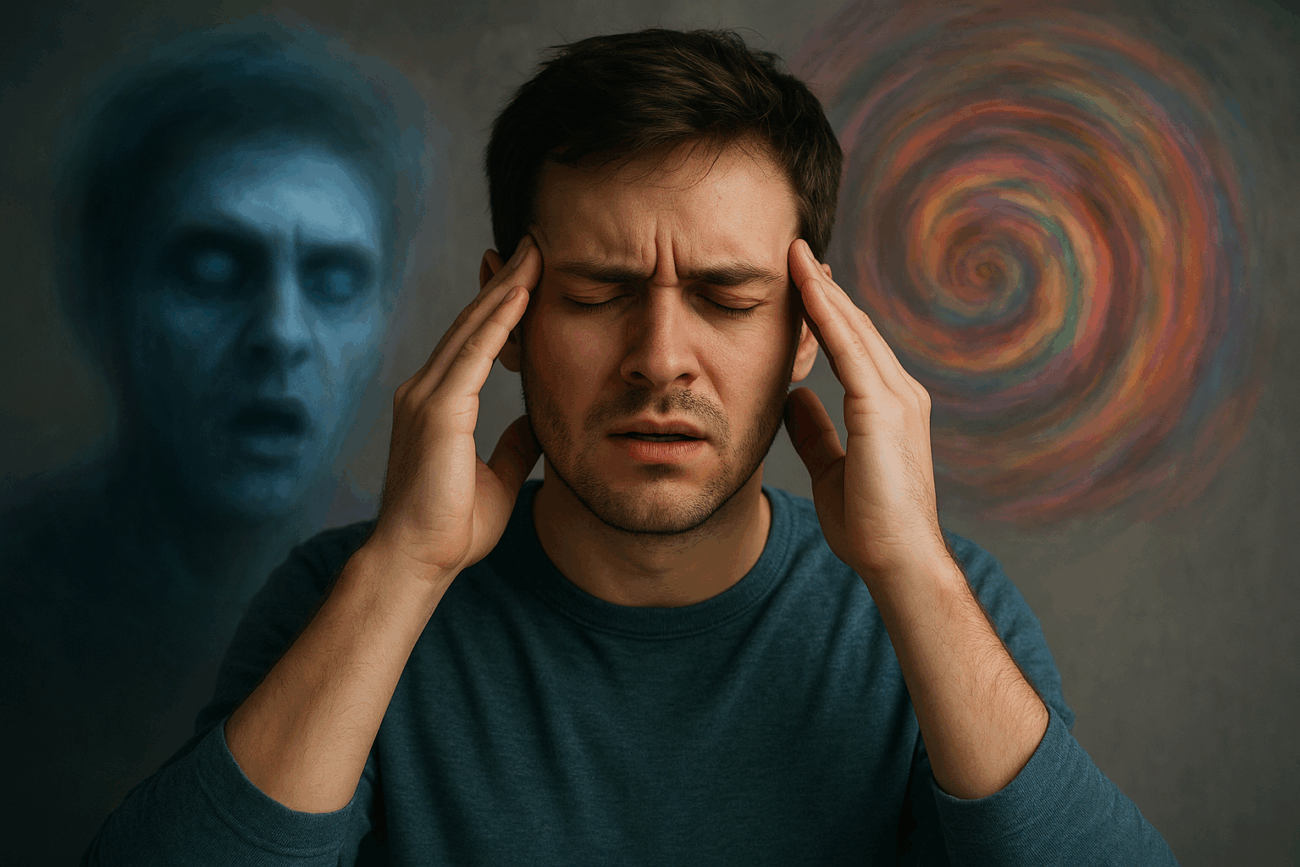Hallucinations are one of the most mysterious and misunderstood experiences of the human mind. They blur the line between reality and imagination, making people see, hear, or feel things that don’t actually exist. While many associate hallucinations with mental illness, the truth is far more complex. Hallucinations can arise from medical conditions, drug use, lack of sleep, and even cutting-edge artificial intelligence (AI) systems that produce “false” information.
In this blog, we’ll dive into the meaning of hallucinations, their causes, types, and the shocking truths you need to know in 2025.
What Are Hallucinations?
A hallucination is a false sensory perception that feels real but is created by the brain. Unlike illusions—where your senses misinterpret something real—hallucinations happen without any external stimulus.
Example:
- Illusion → Mistaking a shadow for a person.
- Hallucination → Seeing a person who isn’t there at all.
Types of Hallucinations
Hallucinations can affect any of the five senses:
- Visual Hallucinations
- Seeing objects, lights, people, or shapes that don’t exist.
- Common in schizophrenia, Parkinson’s disease, or drug-induced states.
- Auditory Hallucinations
- Hearing voices, music, or sounds with no external source.
- One of the most common types, especially in mental health conditions.
- Olfactory & Gustatory Hallucinations
- Smelling or tasting things that aren’t there.
- May signal neurological disorders like temporal lobe epilepsy.
- Tactile (Somatic) Hallucinations
- Feeling sensations (e.g., bugs crawling on the skin) without a cause.
- Common in substance withdrawal or extreme stress.
- Multisensory Hallucinations
- Involving multiple senses at once, creating an even more realistic experience.
Causes of Hallucinations
Hallucinations can be triggered by a variety of factors:
- Mental Health Conditions → Schizophrenia, bipolar disorder, severe depression.
- Neurological Disorders → Parkinson’s disease, dementia, epilepsy.
- Substance Use → Drugs like LSD, psilocybin, or excessive alcohol.
- Sleep Deprivation → Extended lack of rest can cause vivid hallucinations.
- Medications → Some prescription drugs list hallucinations as side effects.
- High Stress or Trauma → PTSD can lead to flashbacks and hallucinatory episodes.
Hallucinations in Artificial Intelligence
Interestingly, hallucinations aren’t just a human problem. In the AI world, hallucination refers to when an AI system generates false but convincing information.
Examples of AI Hallucinations:
- An AI chatbot confidently giving a fake statistic.
- Image generators creating objects or people that don’t exist.
- AI “inventing” citations or sources.
In digital marketing, this is especially dangerous—AI-generated hallucinations can lead to fake claims, misleading ads, or misinformation.
The Shocking Truth Behind Hallucinations
Here’s what most people don’t realize:
- Hallucinations aren’t always linked to mental illness—even healthy people can experience them under stress or sleep deprivation.
- Hallucinations in AI prove that machines can be creative but unreliable, needing human supervision.
- Some hallucinations can actually be helpful for creativity, inspiring art, literature, and even problem-solving.
Final Thoughts
Hallucinations—whether human or AI—show us just how fragile perception is. For people, they can signal medical or psychological issues that need treatment. For AI, they highlight the limits of technology, reminding us that human fact-checking is still essential.
As we step deeper into 2025, hallucinations will continue to fascinate scientists, psychologists, and tech experts alike. The real question is: can we learn to control them, or will they always control us?
